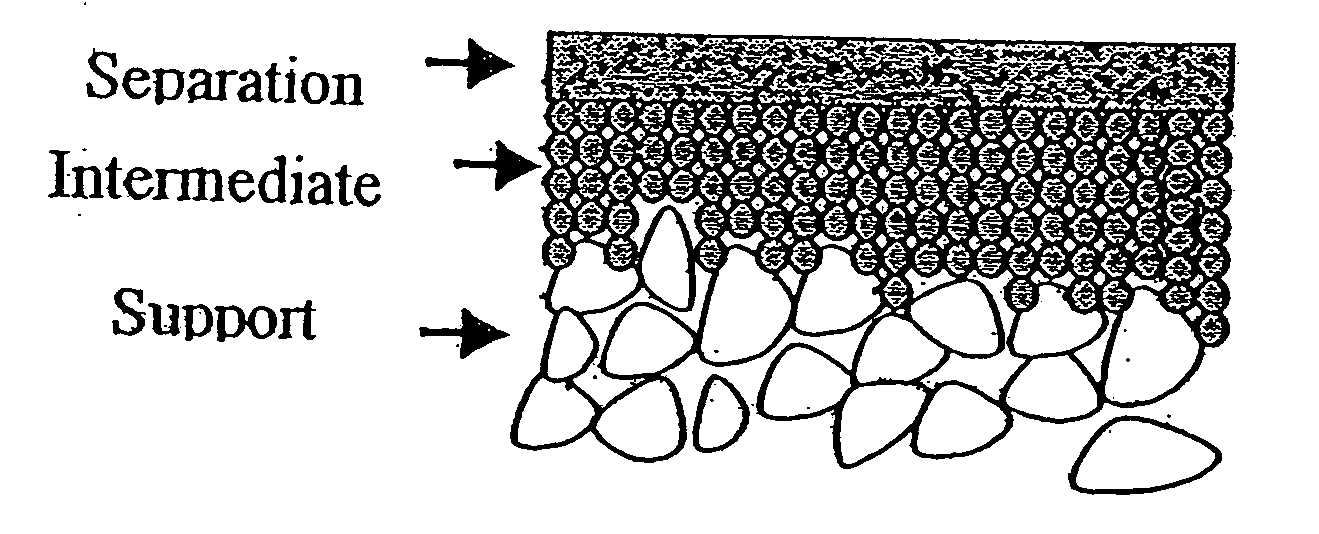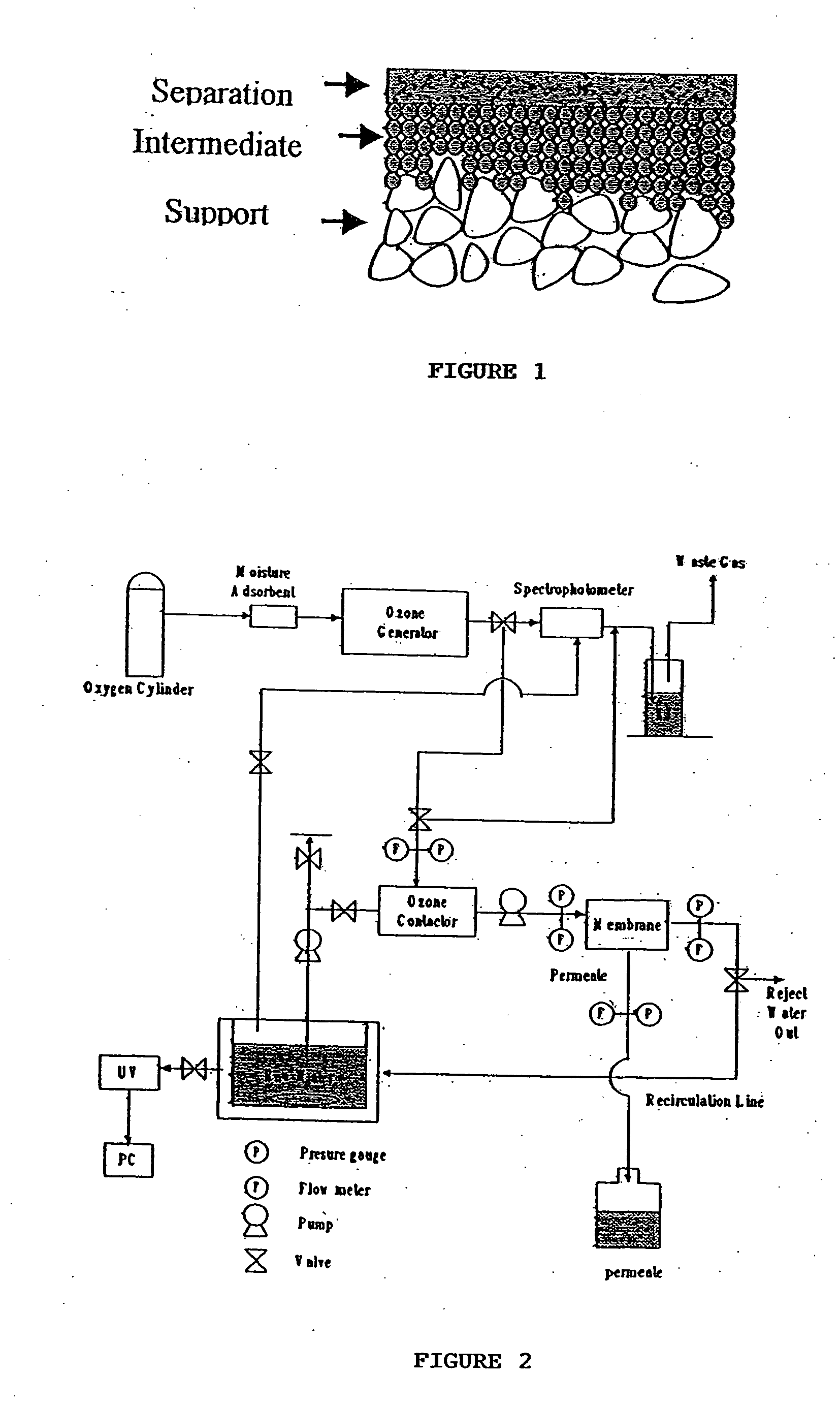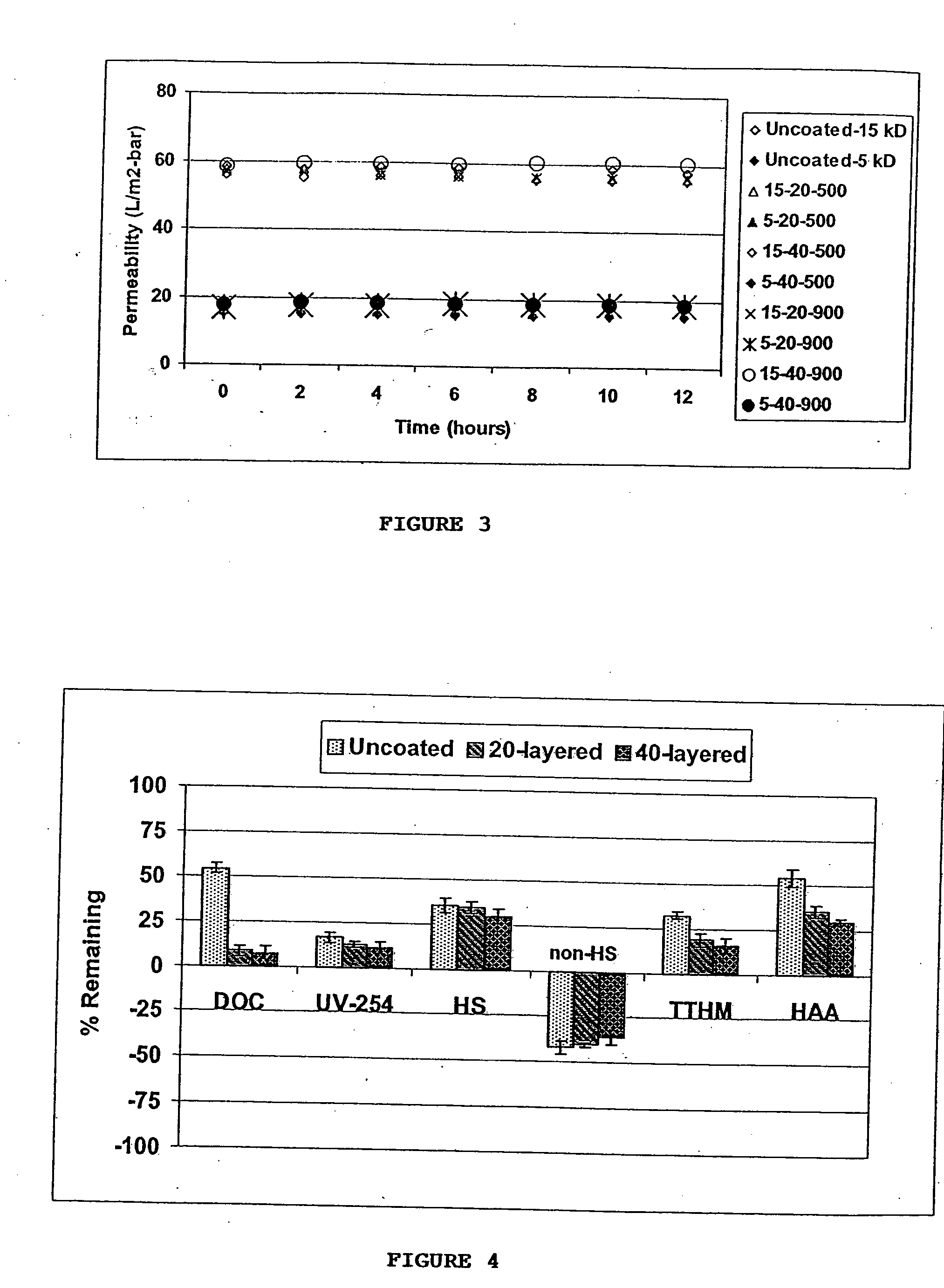Ceramic membrane water filtration
a ceramic membrane and water filter technology, applied in the field of composite filters, can solve the problems of ineffective removal of bromide, dbps production during the disinfection process, and decrease in permeation flux
- Summary
- Abstract
- Description
- Claims
- Application Information
AI Technical Summary
Benefits of technology
Problems solved by technology
Method used
Image
Examples
Embodiment Construction
[0052] The present invention provides a combined ozonation and membrane filtration system to control disinfection by-product (DBPs) precursors in drinking water. Ceramic membranes coated with a nano-crystalline catalyst that decomposes ozone are used in this invention. The invention provides: (1) methods for the preparation of nano-crystalline ceramic membranes, which catalyze the decomposition of ozone and foulants and to characterize these membranes.
[0053] (2) A comparison of the effect of ozonation on membrane fouling in filtration systems using both conventional and catalytic membranes.
[0054] (3) For the source waters studied, a determination of the effect of ozonation on the properties of natural organic matter (e.g., humic substances, non-humic substances, biodegradable dissolved organic carbon) and relate this information to the overall performance of the system.
[0055] (4) A determination of the effect of control parameters (e.g., trans-membrane pressure, ozone dosage, cro...
PUM
| Property | Measurement | Unit |
|---|---|---|
| Pore size | aaaaa | aaaaa |
| Pore size | aaaaa | aaaaa |
| Mass | aaaaa | aaaaa |
Abstract
Description
Claims
Application Information
 Login to View More
Login to View More - R&D
- Intellectual Property
- Life Sciences
- Materials
- Tech Scout
- Unparalleled Data Quality
- Higher Quality Content
- 60% Fewer Hallucinations
Browse by: Latest US Patents, China's latest patents, Technical Efficacy Thesaurus, Application Domain, Technology Topic, Popular Technical Reports.
© 2025 PatSnap. All rights reserved.Legal|Privacy policy|Modern Slavery Act Transparency Statement|Sitemap|About US| Contact US: help@patsnap.com



